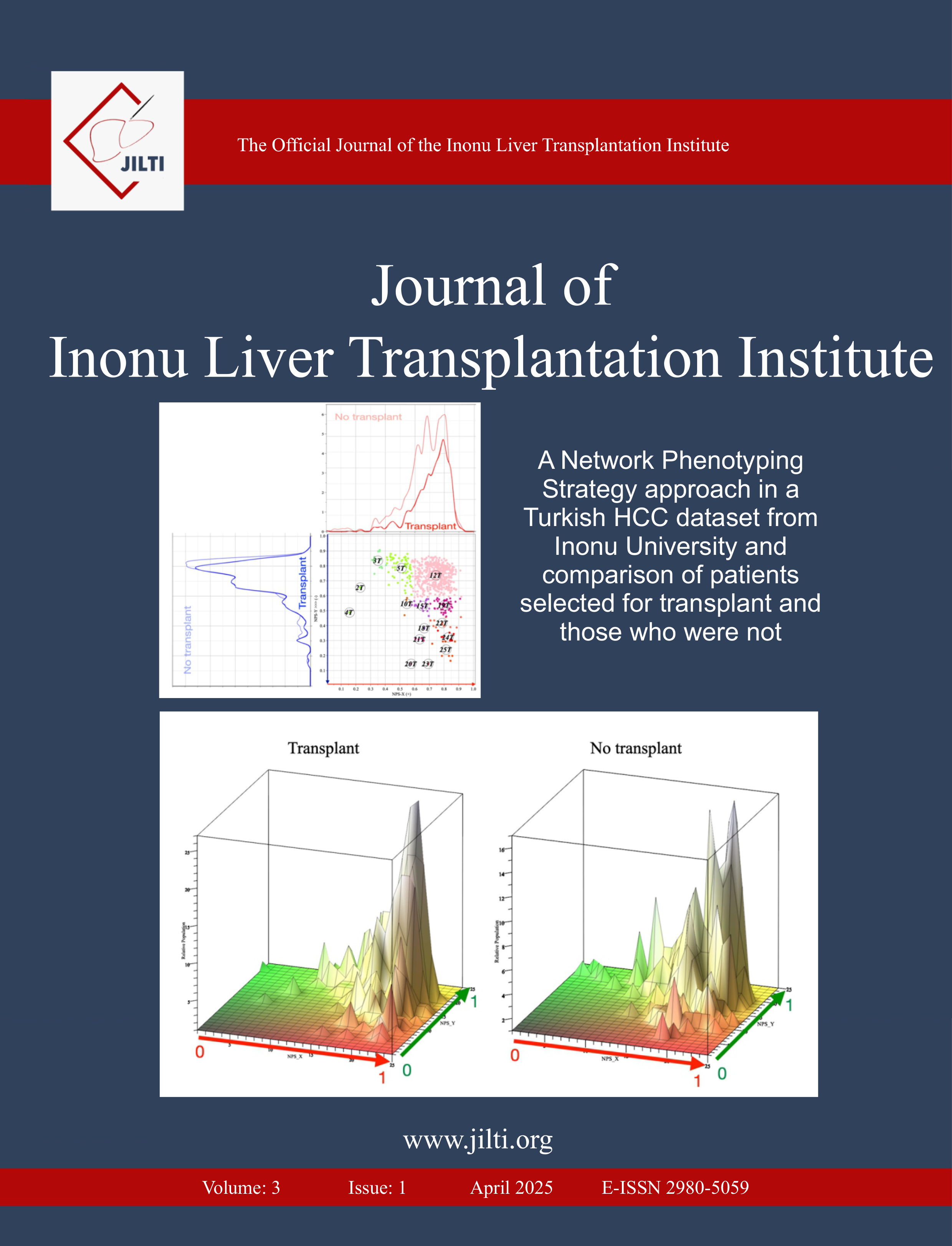The Impact of Graft Type on the Outcome of Liver Transplantation for Hepatocellular Carcinoma
Bora Barut1, Cengiz Ceylan2, Yasin Dalda1, Volkan Ince1, Tevfik Tolga Sahin1, Sezai Yilmaz11Department of Surgery, Inonu University, Malatya, Türkiye2Clinic of Gastrointestinal Surgery, Eskisehir City Hospital, Eskisehir, Türkiye
Objectives: The impact of graft type on the outcomes of liver transplantation (LT) for hepatocellular carcinoma (HCC) remains controversial. We aimed to evaluate the efficacy of living donor (LDLT) versus deceased donor LT (DDLT) by analyzing disease-free survival (DFS) and overall survival (OS).
Methods: We evaluated 356 HCC patients who underwent LT. There were two groups: LDLT and DDLT. We compared OS, DFS, demographic data, and clinical variables between the cohorts. The study also evaluated the impact of Milan criteria adherence on patient outcomes.
Results: The study population was 85.9% male, with a mean age of 52.69 (±0.61) years.While nearly half of the patients were within the Milan criteria, a significant majority of procedures, n=356 (94.7%), were LDLT. The OS and DFS were comparable between the groups, irrespective of Milan criteria compatibility. Patients with tumors within the Milan criteria demonstrated a significantly better OS and DFS compared to those with tumors beyond the criteria (p<0.001).
Conclusion: The Milan criteria remain the best prognostic indicator after liver transplantation for HCC. Liver graft type (LDLT vs. DDLT) did not affect liver transplantation (LT) outcomes for HCC, regardless of Milan criteria adherence.
Manuscript Language: English



